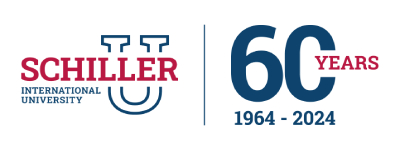Deciding between pursuing a master’s in Europe vs USA is a pivotal choice for international students. It is not just about choosing a campus with pretty buildings.
The US and European countries offer top-tier American and European universities, but they differ in cost, program structure, and cultural experiences. It is about tuition fees, teaching styles, student life, career prospects, and a number of other factors that will shape your future.
Nearly 1.13 million international students chose the US in 2023-24, while European countries continued to see a surge in applications and enrollments, with over half of surveyed universities reporting growth. That is a lot of students making this same call.
But the thin line is, what works for your friend might not work for you. Do you want a two-year deep dive or a one-year sprint? Are you after research, or do you want to get hired fast? Is cost a deal-breaker? And what about visas and work rights?
Masters in Europe vs USA is not just academics; it is personal and has real-life implication. Whether you are drawn to the US’s research opportunities or Europe’s shorter programs, we will cover the essentials to guide your choice.
Masters in Europe vs US: The Big Picture
Master’s in Europe vs US depends on more than geography. It is about the kind of experience you want, the money you are willing to spend, and your plans after graduation.
Both regions offer world-class study abroad programs, but details matter:
| Factor | US | Europe |
| Duration | Usually two years | Often one year (some exceptions) |
| Tuition Fees | $20,000–$60,000/year (private) | €2,000–€20,000/year (varies by country) |
| Language | English | English or local languages |
| Student Life | Campus-centric, diverse clubs | City-based, more independent |
| Post-Study Work | One to three years (OPT) | One to two years (varies by country) |
| Research Focus | High, especially STEM | Varies, some programs less research-heavy |
| Application Process | Standardized tests (GRE/GMAT), SOPs | May not require GRE/GMAT, more direct |
Studying in Europe vs US: Tuition Fees and Scholarships
In 2023-24, the average tuition fees at private US universities ranged from $20,000 to $60,000 per year, with public universities for international students not far behind. On top of that, living expenses in North America can easily add another $10,000–$20,000 a year.
European countries, on the other hand, often offer lower tuition rates, sometimes even free tuition for EU citizens. Non-EU students pay more, but it is still generally less than in the US. For example, many German and Nordic universities charge minimal fees, while France and Spain keep the costs reasonable. Scholarships are available in both regions, but competition is fierce everywhere.
In 2023, 1,126,690 international students studied in the US, contributing $43.8 billion to the economy (Open Doors). In Europe, Germany hosted 458,210 international students (DAAD).
Admissions and Application Process
Applying for a master’s in the US usually requires standardized tests (GRE, GMAT), essays, and recommendations. It is a long process, but you will get a lot of support from the university.
In Europe, the process is often simpler. Many programs do not require GRE/GMAT scores, and you may be able to apply directly to the department. However, the deadlines vary, and you will need to show language proficiency, either English or the local language.
In 2023, the US F-1 visa approval rate was 80.2% (US Visa Statistics).
Check Schiller’s admission requirements.
Teaching Styles and Course Structure
Th higher education in the US vs Europe comparison is not just about money. It is also about how you learn. US master’s programs are usually two years, with lots of coursework, group projects, and a strong focus on research. You will have more time to explore electives and maybe even work as a teaching or research assistant.
European master’s programs are often one year, more specialized, and move fast. You’ll dive deep into your subject from day one, with less time for electives. The course structure is more rigid, and many programs expect you to be independent and self-motivated.
Job Prospects and Post-Study Work Rights
Here’s where the master’s in Europe vs Master in US decision can make or break your future plans. In the US, the Optional Practical Training (OPT) program lets you work for up to three years after graduation if you are in STEM, and one year for other fields.
In 2023, 160,627 students participated in OPT (Boundless). The US job market is huge, but the competition is fierce, and getting a work visa (H-1B) is never guaranteed.
Europe offers post-study work visas too, usually one to two years depending on the country. Germany, the Netherlands, and France are popular for their friendly policies. But salaries can be lower, and the job market might be tighter for non-EU citizens.
Germany offers 18 months to find a job; the UK’s Graduate Route allows two years. In the Netherlands, nearly half of international students stay for more than five years (IAmExpat).
Student Life: Culture, Campus, and Community
Student life is where the studying in Europe vs US debate gets interesting. American universities are famous for their campus culture, sports, clubs, Greek life, and big campus events. You will live, study, and socialize in one place.
European universities are often integrated into the city. You might not live on campus, and your social life will likely revolve around city life, local cafés, and travel. The student community is diverse, but the vibe is more independent.
In 2021/22, the UK hosted 679,970 international students (Universities UK).
Pros and Cons
| Aspect | US (Pros) | US (Cons) | Europe (Pros) | Europe (Cons) |
| Tuition Fees | Scholarships available | High cost | Lower fees, some free programs | Fewer scholarships |
| Duration | More time to explore | Longer, more expensive | Shorter, saves time and money | Intense, less flexibility |
| Research | Strong in STEM | Can be competitive | Varies, some less research-heavy | Not all programs research-based |
| Student Life | Campus culture, support | Can feel isolated | City life, travel opportunities | Less campus support |
| Work Rights | OPT (up to three years) | H-1B lottery is tough | One to two years post-study work | Lower salaries, job market tight |
Masters in Europe vs US—Which Fits You?
The Masters in Europe vs US debate is not about picking a winner. It is about what fits your needs—budget, career plans, and the kind of student life you want. Both regions offer top-notch study abroad experiences, world-class higher education, and a shot at a global career.
Whether you choose North America or the European Union, Schiller International University offers global education with campuses in Tampa, Madrid, Paris, and Heidelberg to let you experience both worlds, offering programs:
- MA in International Relations and Diplomacy
- MS in Digital Marketing and E-commerce
- MS in Global Finance
- MS in Sustainability Management
- MS in Data Science
- Master of Business Administration (MBA)
- MBA in International Business
Your journey starts with a choice: make it count.
FAQs
Q1: What are the main differences between master’s programs in the US and Europe?
Answer: US programs are longer and more expensive, with interactive teaching. Europe’s are shorter and often cheaper, with lecture-based learning.
Q2: What are the visa and work opportunities after graduation in both regions?
Answer: US offers OPT for one to three years; Europe varies, e.g., Germany’s 18-month job search or UK’s two-year Graduate Route.
Q3: Are European Master’s degrees recognized globally like US degrees?
Answer: Yes, accredited European master’s degrees are globally recognized, thanks to the Bologna Process.
Q4: Which region offers more research-focused master’s programs?
Answer: The US excels at research, especially STEM, with significant funding and resources.
Q5: What are the language requirements for studying in Europe vs the US?
Answer: The US requires English proficiency (TOEFL/IELTS). Europe often offers English-taught programs but may require local language skills.

 Request information
Request information









